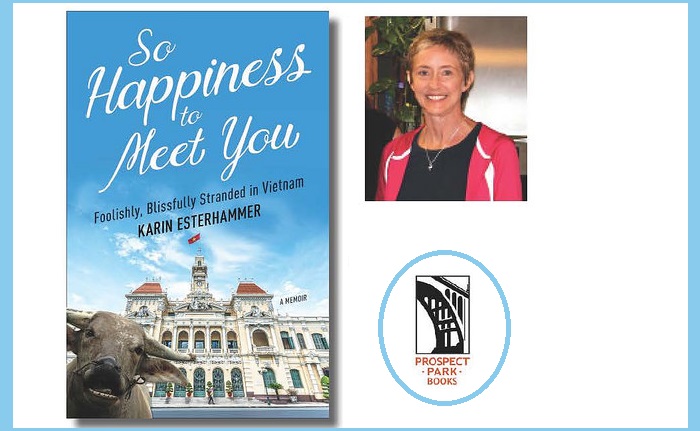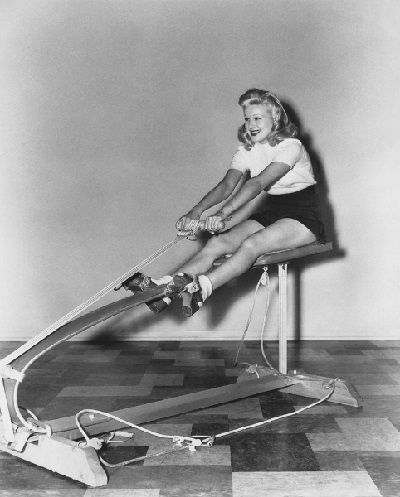SPIRITS
WhistlePig 10 Limited Edition PiggyBank Rye Whiskey

Let’s get right to it. How about an extraordinary gift for the whiskey lover in your life this season? The WhistlePig 10 Limited Edition PiggyBank Rye from WhistlePig Whiskey is pure gold in a bottle. In its third year, the brand’s annual WhistlePig 10 PiggyBank Rye Limited Edition shines bright with an all-gold makeover to celebrate WhistlePig’s standing as the world’s most awarded rye whiskey. The original Berkshire Bitter Pig replica decanter is gold-coated from the snout down to the jingle balls, making a hog-like home for WhistlePig’s flagship, 10-year aged rye whiskey with an extra 10 proof for holiday cheer—bottled at 110 proof. With each year adding a little more sparkle and shine, this limited-edition collectible is the golden hog of the holiday season, the crown jewel of any festive feast and sure to hog all the attention on your home bar or mantle. The one-of-a-kind collectible packaging even doubles as a piggy bank, complete with a coin slot to begin saving for that next great cause. The WhistlePig farm is a rugged and fertile ground for whiskey exploration and is surrounded by 500 acres of rye and experimental crop fields in Shoreham, Vermont. Always brimming with new ideas, the WhistlePig team focuses on big-age statements and bold flavors that can be found in its collection of 16 available whiskeys.
Grand Cru Collection Gift Set by L’Ecole № 41

Do you have a few wine lovers on your gift list this holiday season? Look no further than the Grand Cru Collection Gift Set by L’Ecole № 41. This luxurious offering features three of the brand’s most esteemed wines—each representing the pinnacle of L’Ecole № 41’s winemaking expertise: The 2021 Ferguson from its Estate Ferguson Vineyard; 2021 Perigee from its Estate Seven Hills Vineyard; and 2021 Apogee from Pepper Bridge Vineyard, all hailing from the renowned Walla Walla Valley. With its robust structure and complex flavors, the 2021 Ferguson showcases the unique terroir of the winery’s Estate Ferguson Vineyard in a pre-eminent Bordeaux blend. Customers can expect complex, mineral-laced aromas of cassis, blueberry, boysenberry, iron, tobacco and sandalwood. The 2021 Perigee from L’Ecole № 41’s Estate Seven Hills Vineyard, on the other hand, offers a harmonious blend of perfumy fruit and refined tannins—embodying the essence of its celebrated vineyard. And, as the winery’s flagship wine, the Perigee explodes with pretty aromas of spiced cassis, black raspberry, tobacco leaf, pencil lead, leather and cocoa lifted by notes of spring flowers, sage and rosemary. The last of the trio, the 2021 Apogee, derives from L’Ecole № 41’s Pepper Bridge Vineyard and delivers a bold, spicy and sophisticated profile—making it a standout in any collection. Each gift set is beautifully presented in a box with a personalized gift message and complementary ground shipping throughout the United States. Whether for the holidays, a special occasion or a thoughtful gesture, L’Ecole № 41’s Grand Cru Collection Gift Set is the perfect choice for wine enthusiasts and collectors, alike.
Premium Wine Gift Sets—Silver Oak & Donum Estate


What better way to toast the holiday season and usher in the New Year than with a stellar glass of wine? Donum Estate and Silver Oak wineries both have premium gift sets that are sure to impress any wine aficionado. Donum Estate’s 2020-2022 Zodiac Vertical celebrates the winery’s 2020-2022 Carneros Estate Pinot Noirs with this special collector’s bundle, created in homage to artist Ai Weiwei’s “Circle of Animals/Zodiac Heads.” Ai Weiwei’s iconic artwork adorns Donum Estate’s wine labels, with this unique vertical of its flagship Carneros Estate Pinot Noir helping to recognize Weiwei’s talent. The 2020-2022 Zodiac Vertical includes a bottle from the Year of the Rat (2020), the Ox (2021) and the newly released Tiger (2022). A perfect gift for any wine collector, this set beautifully blends fine art with exceptional winemaking. Another exclusive set, Silver Oak’s Two-Bottle Holiday Gift features one bottle each of Silver Oak’s famously American oaked 2020 Alexander Valley and 2019 Napa Valley Cabernet Sauvignon wines. The fan-favorite bottles come packaged in the brand’s classic holiday gift box and are sure to make a luxurious addition to a red wine-lover’s collection.
Frog’s Leap Wine: Chavez Leeds Ranch Collection Gift Set

Here’s an A-plus wine gift sure to please. Frog’s Leap’s Chavez Leeds Ranch Collection Gift Set showcases the best of the Napa Valley-based winery, including a special appearance of its estate-grown olive oil. An homage to Frog’s Leap’s special relationship with the Chavez-Leeds family, and their ranch which has been part of the winery since 1989, this collection highlights made from some of the finest crops grown on the prized Rutherford land. The 2019 Chavez Leeds Vineyard Cabernet Sauvignon features a rich, black and silky fruit that offers notes of dried herbs and flowers that embody the “Rutherford dust.” The second bottle in the Chavez Leeds Ranch Collection Gift Set, Frog’s Leap’s 2022 Cabernet Franc is a special, rare lot of Cabernet Franc and is prized for its lush red fruited character, black pepper and spice aromas. The winery’s estate grown Extra Virgin Olive Oil showcases the olive trees that feed pollinators and provide habitat for birds and other organisms essential to organic farming. Growing olives extends Frog’s Leap’s harvest season—ensuring the winery’s crews have year-round employment. Frog’s Leap is a family-owned and-operated winery with 100-percent organically grown grapes and upholds a commitment to eco-friendly practices with deep respect for the natural expression of the vine to promote balanced farming. Frog’s Leap wines are deliciously drinkable, versatile and ideal for food pairing. For wine and food lovers in your life, the Chavez Leeds Ranch Collection Gift Set helps you feel good knowing you’re choosing a wine that’s as ethical as it is exquisite.
The Stemless Glassware by Glasvin

Housewarmings aren’t the only reason to elevate a living space and its accessories. Give the gift of premium, versatile drinkware with Glasvin’s Stemless collection. This ultra-light, all-purpose option is ideal for any household, whether for drinking fine wine, a crafted cocktail or simply hydrating with water. Every glass is hand blown and crafted by skilled artisans—making each one unique. The stemless glassware’s elegant and modern design, along with a functional aesthetic, ensures that the glassware can be a sophisticated addition to any table setting. Glasvin takes pride in its partnerships with experienced glassblowers, working directly with them to refine the craft and ensure fair compensation for their expertise. By cutting out the middleman and offering direct pricing, Glasvin delivers luxury, hand-crafted glassware that is accessible to all for everyday use (and is dishwasher-safe) without the fear of high-breakage costs typically associated with premium glassware. The company is breaking metaphorical glass as well—working to increase the participation of minorities in the exclusive world of wine as a proud minority-owned business. Glasvin is the trusted choice of 100-plus restaurants, including more than 25 Michelin-starred establishments such as Torrisi, Oiji Mi and Gabriel Kreuther in New York, Alinea and Indienne in Chicago, Niku Steakhouse in San Francisco and Kato in Los Angeles.
Personalized Wine Selections via the ‘VinoVoss AI Sommelier’ by BetterAI

The VinoVoss AI Sommelier app is a revolutionary smartphone app and web-based semantic wine search and recommendation system, developed by BetterAI, is designed to elevate your own wine discovery experience—and that for gift-giving. VinoVoss picks the perfect wine for any occasion courtesy of a highly advanced artificial intelligence architecture. The tool leverages advanced artificial intelligence to act as your personal sommelier, providing tailored wine recommendations based on your unique taste preferences, occasion, and budget. The app’s signature feature, Smart Somm, is an AI-powered chatbot trained by world-renowned sommeliers, ready to answer any wine-related questions and guide you to the perfect bottle. The interactive Smart Somm chat intelligently assists in wine exploration, answers questions, and provides educational insight. The database is continually updated and monitored by the VinoVoss team of wine experts and sommeliers to keep up-to-date with today’s wine trends. From beginner to seasoned devotee, this search engine is a powerful and streamlined tool to help users build knowledge and shop, sip, and savor. VinoVoss understands that the process of selecting wine can be overwhelming. The breadth of viniculture is challenging to navigate without a skilled guide, and the subjective nature of taste has long stumped traditional search engines. The VinoVoss platform provides a solution, combining the power of AI with the knowledge of sommeliers in a pocket-size package. With an intuitive interface, VinoVoss allows users to search for wines by grape variety, region, or price, and offers detailed tasting notes to enhance your wine appreciation. On iOS, Android, and Desktop, users can browse wines using its advanced natural language search bar, which can understand prompts of any length or complexity. The app also includes innovative features like scanning multiple wine bottles simultaneously, comparing expert and peer ratings, and creating a personalized wine collection. Whether you’re a novice or a connoisseur, VinoVoss makes finding the ideal wine for any occasion effortless and enjoyable. VinoVoss greatly simplifies wine discovery, exploration and enjoyment of wines of the world. It is a personalized, interactive experience that empowers users to make wine selections with confidence.
FOR THE HOME
Green Chintz Tablecloth by Decor Mantra

When it comes to mealtime, who says the food has to be the centerpiece of the dining table? Decor Mantra’s Green Chintz Tablecloth is the perfect addition to a host’s arsenal—helping infuse timeless charm into any dining space for both casual or formal gatherings. Inspired by the historic “Indian chintz,” the tablecloth’s pattern features intricate florals in a fresh green palette, which are meticulously hand-painted, block-carved and printed by skilled artisans. The Green Chintz Tablecloth is also crafted from 100 percent premium cotton, is durable, machine-washable and easy to iron—making it both practical and beautiful. After all, its versatile and monochromatic design offers endless styling possibilities and ensures the dining table is always beautifully set. Committed to preserving traditional textile arts, Decor Mantra supports artisan communities through ethical sourcing, small batch productions and fair wages. Through this mission, the company delivers sustainable, beautifully made products that bring both elegance and a touch of tradition into customers’ homes. And, with more than 450 five-star reviews, Decor Mantra is sure to complement anyone’s personal style and taste, while livening up the space, with its diverse tablecloth selections that are available in various shapes and sizes.
PeachSkinSheets’ Luxury Bedding Products


‘Tis the season for all things cozy and comforting! The Original PeachSkinSheets has just the items for all your gifting needs this year. The brand’s luxurious Sheet Set, available in fully 34 colorways, is made from a breathable, high-performance and athletic-grade SMART fabric that is great for hot sleepers since it has thermal-control and moisture-wicking properties. In addition, the ultra-soft, brushed finish provides a softness level that parallels 1500 thread count cotton, without the high cost, shrinkage, wrinkles and pilling. PeachSkinSheets’ quality product also includes OEKO-TEX Standard 100 certification that keeps owners safe from harmful substances. Versatile and suitable for bed frames of all sizes, these deep-pocket sheets include elastic all the way around—capable of fitting mattresses up to 22-inches thick, such as memory foam, custom number and double pillow top. Instead of a mattress, the company’s PeachyMink X PeachSkinSheets Luxury Faux Mink Robe was created to be wrapped around its owners—whether they’re indoors or outdoors. The incredibly soft and luxurious garment features a shawl lapel, oversized hood, lined pockets, belted tie with loops, soft jersey lining and an ultra-plush faux fur exterior. Made from 100 percent polyester, the Luxury Faux Mink Robe is an equal opportunity robe ideal for both men and women and is available in sizes small to 5X in colors Arctic White Mink and Black Mink.
Live Moss Air Filter Minis by MossPure

Transform your loved one’s space this holiday season with stunning live moss art Minis by MossPure. After all, who doesn’t want a little greenery to liven up their home or office décor? MossPure is the world’s only company to use 100 percent live moss as an air filter, stress relief device and aesthetically pleasing accentuate that requires no watering, sunlight or maintenance. The brand’s patent-pending design and award-winning science allows the moss to live indefinitely, and the company reports it has also been tested for air quality by a certified U.S. laboratory. Rather than simply adding live moss to a décor piece for it to only last a few days, every square foot of MossPure’s live moss air filters capture 300,000 ppm of carbon dioxide and 1.5 million particles of toxic pollutants, including dust and allergens — all in just two minutes. MossPure was created at a startup competition at MIT in June 2020, where it won first place. During the competition, it was realized that other moss wall and décor companies use preserved moss, which is no longer living and processed with toxic chemicals. This type of moss has several disadvantages: not lasting more than one year without needing to be replaced or thrown out; producing a strong chemical smell; and being a low-quality product. MossPure’s founder reportedly applied their 20 years of experience in biology and engineering to create the Minis’ revolutionary technology that is now the world’s only plant-based product to have certified air quality testing—all while helping to create a modern environment for owners to enjoy.
Outdoor Cushion Seat Set by BADESOFA

Add a touch of comfort to you or your loved one’s outdoor space with the ultra-versatile Outdoor Seat Set by BADESOFA. Perfect for use both in and out of the water, this set of three seat pillows is especially great for placement on a hot pool deck surface, a Jacuzzi with a hard exterior or in shallow pool water. After all, relaxation truly becomes a complete experience when it maximizes comfort and is free of sharp edges and rough spots. Developed with sofa-style quality, the Outdoor Seat Set pillows retain their shape with CleanDry+ technology—effortlessly preventing water logging for continued use. The UV-resistant fabric makes the pillows ideal to withstand the elements of the outdoors, and the cover and inner pillow can be separated for washing purposes. BADESOFA was founded with the goal of revolutionizing the bathing and wellness experience. In fact, the name “bath sofa” is a direct translation of the brand name from German’s “Badesofa.” For Founder Natalie Steger, even bathing in her beautiful—yet oversized—bathtub felt more like acrobatics than relaxation. This discomfort was the catalyst for her to tackle the problem and develop the first comfortable bathtub cushion: BADESOFA. With the innovative product’s creation, the case for outdoor use became even more apparent. Consumers can complete the set with optional back and foot cushions—helping to set a new relaxation standard.
Pro-Lifter 20 Heavy Lifting Tool by GRABO

Transform your favorite do-it-yourselfer, hobbyist or construction worker into the ultimate pro this holiday season with GRABO’s Pro-Lifter 20. This smart and professional-grade power tool revolutionizes heavy lifting with its robust vacuum pump technology—capable of handling surfaces weighing up to 375 pounds. The Pro-Lifter 20’s digital pressure sensor and display, smart weight and pressure settings can lift any slab of flat, solid material. And, unlike other large and expensive material handling solutions, this device is portable, reliable and ergonomically designed to provide better grip and less fatigue when moving heavy objects. It works perfectly with glass, wood, ceramic tiles, metals and other flat materials, and also serves as an effective vacuum lifter for dusty, semi-porous or rough surfaces. The Pro-Lifter 20’s operation is also simple. Just turn on the unit and place it straight onto the surface you want to lift. Its innovative technology automatically activates the vacuum pump, maintaining optimal pressure and performance while eliminating guesswork. With an impressive airflow of 20 liters per minute, the tool can last for 900 cycles or up to 1.5 hours on nonstop running. Users can also expect the Pro model to come with four metal external anchor points for official and third-party attachments—opening up a world of lifting possibilities.
SELF CARE
‘BFF’ Beauty, Fresh & Fun Makeup Starter Set from M2U NYC

If there’s a popular makeup trend that’s taken 2024 by storm, it’s the no-makeup, makeup look. For this holiday season, M2U NYC has shoppers covered with its BFF: Beauty, Fresh & Fun Makeup Starter Set. Whether just starting a makeup journey or refreshing the tried-and-true routine, this kit includes everything needed to enhance natural beauty with ease. Inside, owners will find five essential products designed to deliver performance, versatility and convenience. The Liquid Blush offers a lightweight, blendable formula for a healthy, rosy glow, while the Tubing Mascara provides smudge-proof, buildable volume and length for lashes that last all day. The Liquid Highlighter adds a radiant touch to any look, while the creamy Eye Crayon brightens eyes effortlessly. To finish, the Lip Gloss does its job by giving a glossy, moisturizing touch for a polished look that feels as good as it appears. Each product is crafted with skincare-infused, clean, vegan and cruelty-free formulas—making it a thoughtful choice for beauty lovers. The set’s compact and travel-friendly design ensures easy touch-ups at home or on the go. Either as a gift for a loved one, or a little self-care treat, this all-in-one collection will inspire confidence, elevate routines and help everyone shine this season.
Medical Grade Silicone Gel Scar Diminishing Serum from ScarScience

Help your friends and family say goodbye to scars old and new this year with ScarScience’s Medical Grade Silicone Gel Scar Diminishing Serum. Perfect for sensitive skin, this self-dispensing treatment comes in two no-touch application formats: Brush or Massage Roller. Both are housed in a clickable, pen-like tube that is portable and easy-to-use—even for children. The odorless gel dries in minutes to form a flexible, breathable, non-tacky and waterproof protective covering over the affected area. Massage as long as recommended by doctors to break up collagen and soften tissue, improving the appearance of scars. The massage roller option combines this technique with clinically-proven silicone technology to offer a unique, two-pronged approach to scar reduction. It’s proven to eliminate redness, maintain moisture and hydration, improve elasticity and soften and minimize the appearance of scars and blemishes. The Scar Diminishing Serum is ideal for hypertrophic or keloid scars resulting from injuries, burns, surgeries, cosmetic procedures, piercings, acne, stretch marks, cuts and more. Trusted globally by doctors, dermatologists and plastic surgeons, ScarScience is dedicated to merging dermatological expertise with pioneering technology, ensuring every scar is just a chapter and not the entire story of its owner’s experience. Even more, it’s the No. 1 doctor-recommended scar reduction treatment in the U.S.
For the Silo, Merilee Kern. Happy Holidays!
Merilee Kern, MBA is an internationally-regarded brand strategist and analyst who reports on cultural shifts and trends as well as noteworthy industry change makers, movers, shakers and innovators across all categories, both B2C and B2B. This includes field experts and thought leaders, brands, products, services, destinations and events. As a prolific lifestyle, travel, dining and leisure industry voice of authority and tastemaker, Merilee keeps her finger on the pulse of the marketplace in search of new and innovative must-haves and exemplary experiences at all price points, from the affordable to the extreme. Her work reaches multi-millions worldwide via broadcast TV (her own shows and copious others on which she appears) as well as a myriad of print and online publications. Connect with her at www.TheLuxeList.com and www.SavvyLiving.tv / Instagram www.Instagram.com/MerileeKern / Twitter www.Twitter.com/MerileeKern / Facebook www.Facebook.com/MerileeKernOfficial / LinkedIN www.LinkedIn.com/in/MerileeKern.
***Some or all of the accommodations(s), experience(s), item(s) and/or service(s) detailed above may have been provided or arranged at no cost to accommodate if this is review editorial, but all opinions expressed are entirely those of Merilee Kern and have not been influenced in any way.***





































































 I realized I needed to do something about it and fast. So I
I realized I needed to do something about it and fast. So I 



 And what is a good party without the latest summer hits? Pump up the party with the perfect summer companion; Yatra Aquatune 9612 speaker.
And what is a good party without the latest summer hits? Pump up the party with the perfect summer companion; Yatra Aquatune 9612 speaker. he sun, sand and sea. Leave your worries behind – Yatra has got you covered!
he sun, sand and sea. Leave your worries behind – Yatra has got you covered!












